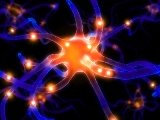Brain Based Learning
How does brain based learning differ from traditional learning? And what does this mean for you as a lifelong learner?
For those of us in the Western world, much of the way in which we are taught in the classroom comes from the ancient Greeks.
The Greeks idolized logic. As a result, they believed that a topic should be broken down into individual parts, mastered separately, and then reassembled into a whole following a logical sequence of steps.
This is one reason why teachers—from kindergarten to university and out into the workforce—have been taught to logically plan, order and present small increments of knowledge that students are then expected to memorize by rote and regurgitate on a test.
It is why teachers carefully present the alphabet letter by letter, the principles of mathematics one number at a time, and the basics of a foreign language one word and grammatical rule after another.
Unfortunately, our brains don't actually work like this!

|
A Few Brain Based Learning Facts
|
In Human Brain and Human Learning
, one of my favorite books on learning and the brain, Leslie A. Hart writes,
"The implications of this must be seen as staggering for anyone engaged in instruction: the brain we are dealing with was not "designed" by evolutionary needs for logic, manipulation of symbols, for dealing with tight, sequential structures or word-systems, which today constitute the main concerns of conventional schooling and much training."
So if our brains do not look for logical sequences, what DO they look for?
Patterns, Associations, and Meaning
Our brains look for patterns, associations, and—above all—meaning.
Rather than following a linear, step-by-step learning sequence, our brains follow numerous paths simultaneously. And they each learn in a multitude of ways by adding to and building upon previous knowledge and experience.
One of the most amazing things about brain based learning is the brain's enormous potential for making connections. In This Is Your Brain on Music: The Science of a Human Obsession
, Daniel J. Levitin writes that our brains consist of approximately 100 billion neurons, each of which is connected to 1,000 to 10,000 other neurons.
In fact, he says, the number of cominations possible—and hence the number of possible different thoughts or brain states each of us can have—exceeds the number of known particles in the entire known universe.
The Next Step
To discover the principles of brain-based learning, Go to the Principles of Learning from Brain Based Learning
Sign Up for Conversations
Sign up today for Conversations, Learning Doorway's free monthly newsletter. Each issue brings you news, tools and techniques that will help you improve your creativity and your ability to learn.




